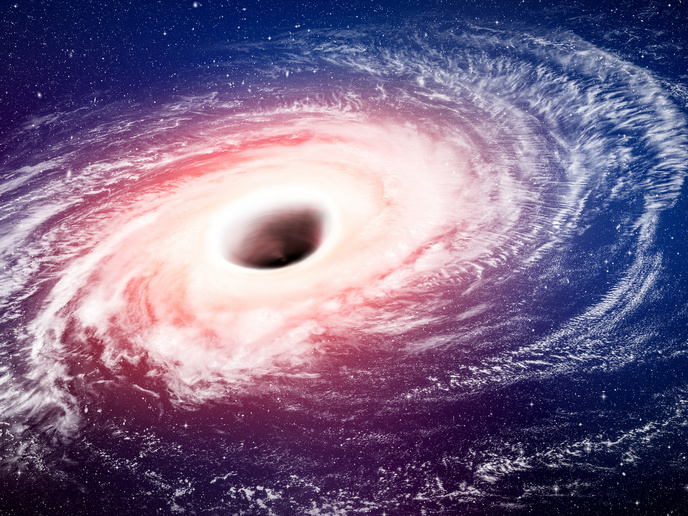How are black holes powered?
A massive star’s death marks a black hole’s beginning. When the star collapses, it creates a region in space where gravity is so strong that nothing – not even light – can escape. Scattered throughout the universe, black holes generally have masses that are 10 to 24 times bigger than the Sun. But there are also some black holes that are millions of times as massive as our solar system’s star. Precisely how these SMBHs are formed, or how they power themselves, remains unknown. A recent study(opens in new window) supported by the EU-funded CR-GAS project has now shed some light on this mystery. The study shows how SMBHs feed off gas clouds that reach them after travelling vast distances from one galaxy to another. This important link between the interaction of neighbouring galaxies and the huge amount of gas fuelling the SMBHs is explained in the paper published in the journal ‘Nature Astronomy’. “Supermassive black holes fuel their activity by, in part, the gradual accumulation of gas from the environment around them. Supermassive black holes can make the centres of galaxies shine very brightly when they capture gas and it’s thought this process can be a major influence on the way that galaxies look today. How SMBHs get enough fuel to sustain their activity and growth still puzzles astronomers, but the work we have carried out provides a step towards understanding this,” explains study lead author Assistant Prof. Sandra Raimundo of CR-GAS project coordinator University of Copenhagen, Denmark, in a ‘EurekAlert!’ news release(opens in new window).
A clear link
After studying the orbits of gas and stars in over 3 000 galaxies, the research team identified those that have something called misaligned gas. As described in the news release, misaligned gas is gas rotating in a different direction from the stars in a particular galaxy, which indicates a past interaction between two galaxies. The team discovered that galaxies with the presence of misaligned gas had a higher proportion of active SMBHs. The results suggest that the gas is transferred where two galaxies meet, travels hundreds of thousands of light years through space and is then sucked in by the SMBH’s gravitation forces as a vital source of fuel. “This is the first time that a direct connection has been observed between the formation and presence of misaligned gas and the fuelling of active supermassive black holes,” remarks Assistant Prof. Raimundo, who is also a visiting assistant researcher at CR-GAS project partner University of California in the United States. Discoveries such as this are the focus of CR-GAS (Black hole growth fuelled by counter-rotating gas) that aims to uncover the mechanism fuelling the growth of active black holes. Study co-author Prof. Marianne Vestergaard, also of the University of Copenhagen, comments: “What is exciting about these observations is that we can now, for the very first time, identify the captured gas and trace it all the way to the centre where the black hole is devouring it.” For more information, please see: CR-GAS project(opens in new window)



